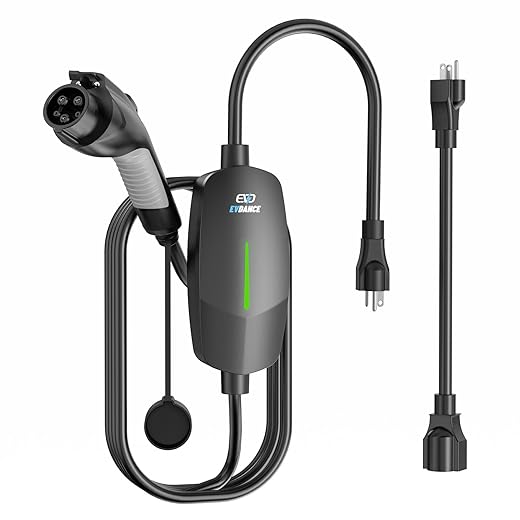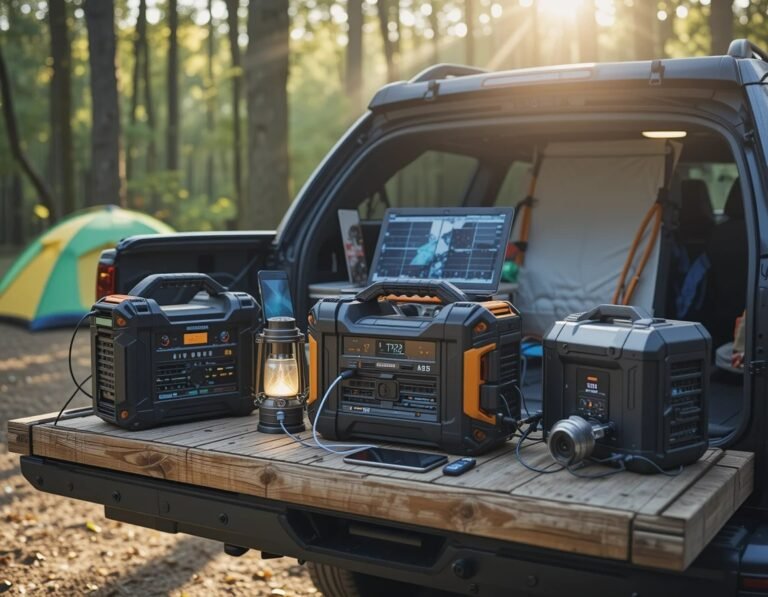Reviving Your Ride: The Necessity of EV Emergency Mobile Charging
As electric vehicles (EVs) continue to gain traction on the roads, the ability to manage their battery life effectively becomes crucial. For EV owners, running out of charge can feel like a mini-disaster, especially when away from charging stations. Fortunately, EMERGENCY MOBILE CHARGING solutions are here to help!
This article delves into the essentials of EV charging, highlighting the importance of mobile charging solutions. From understanding the basics to knowing how to use these services, readers will learn about various options available. Additionally, it will cover finding mobile charging services and preparing for unexpected situations. With the right knowledge, electric vehicle owners can stay empowered and ready to conquer the road, no matter the challenge!
Understanding EV Charging Basics
Electric vehicles rely on efficient charging systems that are crucial for their performance and convenience. Understanding how EVs are charged is the first step toward ensuring a seamless driving experience.
The Charging Spectrum
EV charging primarily occurs through three methods:
Know Your Vehicle
Understanding your vehicle’s range and battery capacity is paramount. For example, if an EV has a range of 250 miles, knowing your destination and available charging stations can help prevent range anxiety.
With the right charging tools, like a reliable portable charger, you can extend your reach.
Familiarity with these fundamental concepts equips EV owners to navigate their unique charging needs effectively. This understanding naturally segues into why emergency mobile charging is essential—ensuring you’re never left stranded by the roadside.
The Need for Emergency Mobile Charging
As electric vehicle (EV) adoption expands, the necessity for emergency mobile charging becomes increasingly clear. Imagine an adventurous road trip, only to find your EV’s battery gauge dipping dangerously low miles from the nearest charging station. Unexpected detours, traffic snarls, or the lure of scenic backroads can quickly drain your battery life.
Common Scenarios
In these instances, the peace of mind that comes with knowing mobile charging solutions are on hand is invaluable. Having a portable charging option allows drivers to navigate their journeys confidently, making them well-prepared for any unwelcome surprises.
As EV technology continues to evolve, understanding the various mobile charging options can enhance this preparedness even further.
Types of Mobile Charging Solutions
When it comes to mobile charging solutions for electric vehicles, variety is key. Each type of charging option comes with its own advantages and drawbacks, catering to different needs and situations.
Portable Chargers
Portable chargers are compact devices designed for on-the-go charging. They often come with various connectors for compatibility with different EV models.
Charging Cables
These are specialized cables that allow your EV to charge from standard electrical outlets or charging stations.
Battery Packs
Portable battery packs offer a more robust solution, capable of charging your EV without needing an outlet. These devices can store energy to charge your vehicle in emergencies.
Each of these options serves a distinct purpose in empowering EV owners to manage unexpected charging needs effectively. As the next section will explore, knowing how to use these tools is just as crucial as having them at your disposal.
How to Use Emergency Mobile Chargers
When faced with an unexpected situation, knowing how to effectively use emergency mobile chargers can be a game changer. Here’s a step-by-step guide to get started:
Step 1: Unpack and Inspect
Before jumping in, ensure the charger is in good condition. Check for any visible damage to the cords or connectors. A quick inspection can save time and frustration later on.
Step 2: Plug it In
Connect your mobile charger to a power source, such as a standard outlet, using the appropriate cable. For battery packs or portable chargers, ensure they are fully charged before use. If using a portable charger on the go, make sure it’s powered up before hitting the road.
Step 3: Connect to Your EV
Using the correct connector, plug the charger into your vehicle’s charging port. Many mobile chargers come with multiple connector options. For instance, a Type 1 connector works well with most North American EVs, while Type 2 is common in Europe.
Step 4: Safety First
Always prioritize safety. Avoid charging in wet conditions and be cautious of your surrounding area. Keep the charging cable secure to avoid tripping hazards.
Step 5: Monitor Charging Progress
Most chargers will have built-in indicators showing charging status. Keep an eye on these indicators to see how much range is being added—typically, slow chargers will offer only a few miles per hour, so patience may be needed.
Step 6: Prepare for Efficient Use
To maximize charging speed and efficiency, ensure your vehicle is not using excessive power. Turn off unnecessary features like air conditioning or onboard entertainment systems to conserve energy during the charging process.
By mastering these steps, EV owners can confidently navigate any charging emergency. As further preparation is essential for unexpected situations, the next section will delve into how to find mobile charging services when you need assistance the most.
Finding Mobile Charging Services
Locating mobile charging services can be a lifesaver for electric vehicle (EV) owners facing unexpected battery drains. Fortunately, various tools exist to help simplify this process.
Apps and Websites
A variety of smartphone apps and websites can guide drivers to nearby charging options:
Community Networks
Many community-driven platforms exist to support EV owners in finding charging solutions:
Equipped with these resources, drivers can ensure they are prepared for the unpredictable nature of electric driving. With reliable options to locate charging support, EV owners can feel more confident in exploring new roads and adventures. The next section will discuss how to effectively prepare for those unexpected scenarios.
Preparing for the Unexpected
Being an electric vehicle (EV) owner comes with the unique responsibility of staying prepared for unforeseen charging dilemmas. Here are some effective ways to ensure readiness for emergencies.
Keep Equipment in Top Condition
Regular maintenance of charging equipment is crucial. EV owners should:
Know Your Vehicle’s Specifications
Understanding your EV’s battery capacity and charging compatibility can significantly streamline emergency solutions. Owners should:
Develop an Action Plan
In the event of a battery depletion, having a proactive action plan is key. This plan could include:
By taking these steps, EV owners can maintain control over their energy needs and revitalize their journeys. With a solid preparation strategy in place to tackle any curveballs on the road, the next logical step is to embrace the empowering mobile charging solutions that can enhance every EV experience.
Empower Your EV Journey with Mobile Charging Solutions
In conclusion, access to emergency mobile charging options is vital for every electric vehicle owner. By understanding the fundamentals of EV charging, preparing for unexpected situations, and knowing where to find available resources, drivers can navigate their electric journey with confidence and ease.
As the demand for electric vehicles continues to rise, embracing these mobile charging solutions will help ensure a smooth and empowering experience on the road. Let every journey be a well-planned one, and remember: a little preparation can go a long way in keeping the electric journey alive and thriving!









I’m all for mobile charging, but it seems like a hassle to set up. How long does it usually take to charge your car on the go?
It varies! Level 2 chargers can take a couple of hours, while portable chargers might take longer depending on your battery.
I usually plan for a coffee break while charging, so it works out!
I love the idea of being able to charge my EV anywhere, but the options seem a bit overwhelming. Which mobile charger would you recommend for someone just starting out? 🤔
Hey Sophie! If you’re just starting, the Level 1&2 Charger with the 25FT cable is a solid choice. It’s versatile and easy to use!
I second that! I use the Level 2 charger and it’s perfect for home and on-the-go.
This article is super helpful! I didn’t know about EF ECOFLOW DELTA Pro. How much power can it actually store? I’m curious if it can handle longer trips. 💡🔋
I’ve used it for camping trips! It powered my fridge and lights with no issues. Definitely a game changer!
Great question, Tina! The EF ECOFLOW DELTA Pro can store up to 3600W, which is pretty impressive for long trips.
I didn’t know mobile charging solutions could be this effective! I’m planning a trip next month, so I’ll be sure to pack a portable charger. Any last-minute advice?
Just make sure it’s fully charged before you hit the road! And check your EV’s range.
And don’t forget to download the charging apps! They really help a lot.
Honestly, do we really need all these mobile charging solutions? Can’t we just plan our stops better? I mean, it’s not like we’re in the Stone Age. 🪨
Good point, Brian! But sometimes life throws curveballs, and having a backup can save you a lot of headaches.
Exactly! I thought I planned perfectly once, but ended up stranded. Mobile chargers are a safety net.
Okay, but can we talk about how annoying it is to find charging stations? I mean, half the time they’re out of order! 😩 Any tips on finding reliable charging services?
Totally feel you, Derek! Using apps like PlugShare or ChargePoint helps a lot to find working stations.
I’m with you, Derek! I’ve been stuck too many times. The apps suggested by admin can be lifesavers!
This is such a must-read for EV owners! I’m definitely going to keep an eye on mobile charging options. 🙌 Any tips for preparing for emergencies?
Good advice! Also, familiarize yourself with nearby charging stations on your routes.
Always keep a portable charger in your trunk! And make sure to check its battery regularly.
I’m a bit skeptical about these mobile chargers. Do they really work? I’ve heard mixed reviews. 🤨
It really depends on the charger and the situation! Most users have positive experiences, especially with known brands.
I had my doubts too, but the NOCO saved me last month. I was shocked it worked so well!
So, I just bought a Level 2 charger after reading this. Can’t wait to try it out! Hope it makes my life easier! 👍
Awesome choice, Jake! You’ll love the convenience it brings!
Congrats! Let us know how it goes once you start using it!
Great article! I never realized how important mobile chargers are for EVs. The NOCO Boost Plus GB40 sounds like a lifesaver. I’m definitely going to grab one for my next road trip. 🚗💨 Anyone used it? How does it actually work?
Totally agree! I’ve had my NOCO for a year now and it’s saved me twice already. Definitely worth the investment!
Thanks, James! The NOCO Boost Plus GB40 is super easy to use. Just connect it to your battery and it’ll give you enough power to start your car. Perfect for emergencies!